
Scientists say human urine can be recycled into extremely good fertilizer for plants at a very low cost.

During the Stone Age around 6,000 years BC, farmers knew how to use cattle manure such as cows, sheep, goats and pigs as a slow-release fertilizer for plants.

Peat is made up of corpses of different plants. Plant material is accumulated, buried and affected by submerged conditions for many years. With anaerobic decomposition, the plant

Using too much fertilizer, especially nitrogen fertilizer in cultivation leads to excessive nitrate (NO3) and dangerous to consumers' health, scientists warn.

Synthetic fertilizer for plants is a major source of pollution. This effect is even more pronounced when the fertilizer dissolves and dissolves into the water source.

Hanoi team of scientists has successfully researched the technology of producing micro-organic fertilizer specialized for sugarcane.

In order to use fertilizers effectively, especially in rice production, for many years, the agricultural sector has regularly advised farmers to use fertilizers on the principle of

Tomato plants are being cultivated by farmers all over the country, from household consumption to large commodity production. Besides breeding and caring factors, the technique of

For rural areas, the situation of people igniting and discharging indiscriminately straw after harvest into canals, roads causing dust, environmental pollution, obstructing traffic

Hair, which is what goes off at ladies' beauty and hair cutting shops, can become a useful source of nutrition for the soil if combined with other fertilizers.
 Scientists say human urine can be recycled into extremely good fertilizer for plants at a very low cost.
Scientists say human urine can be recycled into extremely good fertilizer for plants at a very low cost. During the Stone Age around 6,000 years BC, farmers knew how to use cattle manure such as cows, sheep, goats and pigs as a slow-release fertilizer for plants.
During the Stone Age around 6,000 years BC, farmers knew how to use cattle manure such as cows, sheep, goats and pigs as a slow-release fertilizer for plants. Peat is made up of corpses of different plants. Plant material is accumulated, buried and affected by submerged conditions for many years. With anaerobic decomposition, the plant
Peat is made up of corpses of different plants. Plant material is accumulated, buried and affected by submerged conditions for many years. With anaerobic decomposition, the plant Using too much fertilizer, especially nitrogen fertilizer in cultivation leads to excessive nitrate (NO3) and dangerous to consumers' health, scientists warn.
Using too much fertilizer, especially nitrogen fertilizer in cultivation leads to excessive nitrate (NO3) and dangerous to consumers' health, scientists warn. Synthetic fertilizer for plants is a major source of pollution. This effect is even more pronounced when the fertilizer dissolves and dissolves into the water source.
Synthetic fertilizer for plants is a major source of pollution. This effect is even more pronounced when the fertilizer dissolves and dissolves into the water source. Hanoi team of scientists has successfully researched the technology of producing micro-organic fertilizer specialized for sugarcane.
Hanoi team of scientists has successfully researched the technology of producing micro-organic fertilizer specialized for sugarcane. In order to use fertilizers effectively, especially in rice production, for many years, the agricultural sector has regularly advised farmers to use fertilizers on the principle of
In order to use fertilizers effectively, especially in rice production, for many years, the agricultural sector has regularly advised farmers to use fertilizers on the principle of Tomato plants are being cultivated by farmers all over the country, from household consumption to large commodity production. Besides breeding and caring factors, the technique of
Tomato plants are being cultivated by farmers all over the country, from household consumption to large commodity production. Besides breeding and caring factors, the technique of For rural areas, the situation of people igniting and discharging indiscriminately straw after harvest into canals, roads causing dust, environmental pollution, obstructing traffic
For rural areas, the situation of people igniting and discharging indiscriminately straw after harvest into canals, roads causing dust, environmental pollution, obstructing traffic Hair, which is what goes off at ladies' beauty and hair cutting shops, can become a useful source of nutrition for the soil if combined with other fertilizers.
Hair, which is what goes off at ladies' beauty and hair cutting shops, can become a useful source of nutrition for the soil if combined with other fertilizers.
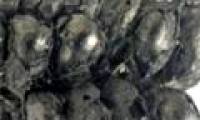
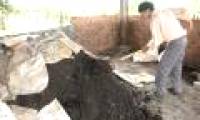


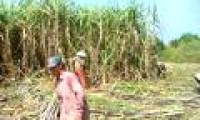
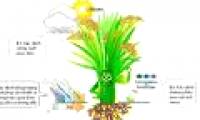
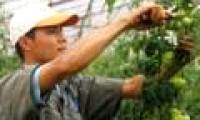
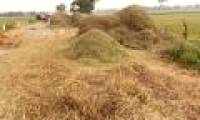

 Why did the ancient Babylonian civilization perish? Was it because they considered 'that thing' a daily meal?
Why did the ancient Babylonian civilization perish? Was it because they considered 'that thing' a daily meal? Just discovered a 72km 'tear in the Earth', the world's second largest country is in fear of a tsunami attack
Just discovered a 72km 'tear in the Earth', the world's second largest country is in fear of a tsunami attack Top 7 facts about the hottest place in the world, where you can fry eggs at outdoor temperature
Top 7 facts about the hottest place in the world, where you can fry eggs at outdoor temperature The Qing Dynasty collapsed, what surname did 20,000 royal descendants change to to integrate into the new era?
The Qing Dynasty collapsed, what surname did 20,000 royal descendants change to to integrate into the new era? After 389 days in the Arctic, costing more than $160 million, hundreds of scientists brought back bad news: What was it?
After 389 days in the Arctic, costing more than $160 million, hundreds of scientists brought back bad news: What was it? How long does it take to fall in love with someone?
How long does it take to fall in love with someone? How much silver has ever been discovered in the world?
How much silver has ever been discovered in the world? How does an atomic bomb work?
How does an atomic bomb work?